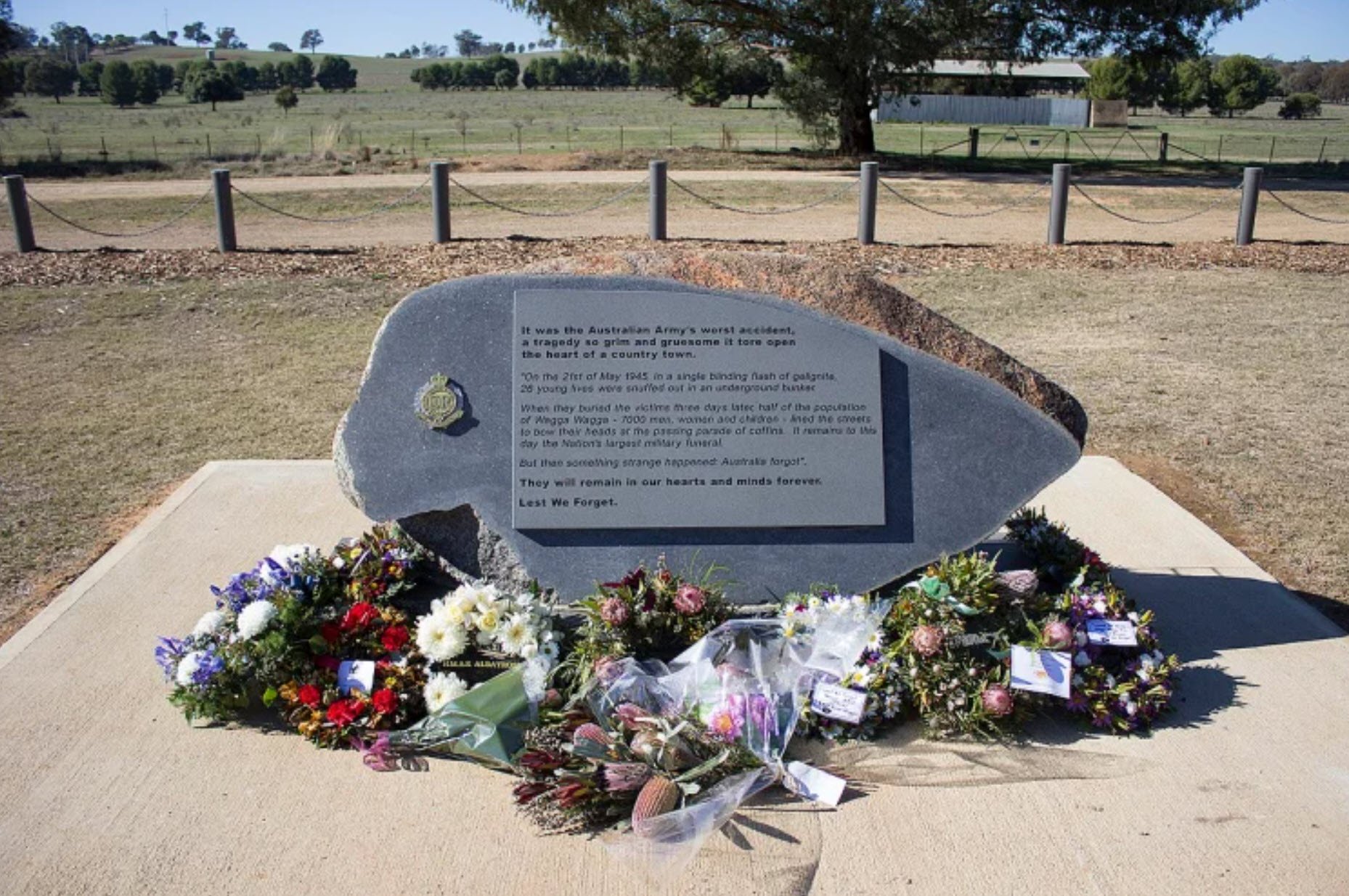The Forgotten "Kapooka Tragedy"
On a cold winter afternoon on the 21st May 1945, as World War II was coming to an end, a massive explosion killing 26 soldiers, rocked the Kapooka Training Area near Wagga Wagga. It became known as the “Kapooka Tragedy” and is the Australian Army’s largest loss of life in a training accident.
Field engineering training was conducted by the then Royal Australian Engineer Training Centre at Kapooka and was focused on demolitions, minefields, field defences, road and airfield construction and bridging. Each subject was concentrated over a number of weeks of the 16 week course and conducted by highly experienced instructors.
It was the first day of Week 4 and for a group of 25 trainee sappers and 2 instructors, the afternoon was to be taken up with training in the preparation of hand charges for a night practice. This involved a demonstration and then, for safety reasons, hands-on one recruit at a time and required the use of detonator cord, fuse wire and ignition sources. The chief instructor, a miner and munitions factory worker in civilian life, was well equipped to instruct the trainees in the use of explosives.
To take advantage of the warmth it offered, the men entered a half-buried dugout (bunker) about 6.5m long, 6m wide and 2m high and one of four in the area. It was 2:30pm. Also, in the dugout, 50kg of high explosives had been stored. Shortly after, at about 2:45pm, a huge explosion occurred. The dug-out collapsed and smoke and debris filled the air. The scene was confronting to first responders.
The remnants of the dugout after the explosion
24 of the men including the two instructors were killed instantly. Two died just a few hours later from their injuries. Miraculously, one trainee survived but was profoundly deafened and badly injured after the force of the explosion imbedded him in the clay wall of the dugout. Of the dead, 19 were identified by identity discs with the other seven, being unrecognisable, identified using personal possessions.
A deep sense of sadness came over the small town of Wagga Wagga. Three days later, the funeral was conducted for the 26 men and over 7,000 residents lined the streets as four flatbed trucks with the flagged draped coffins, passed on the way to the Wagga Wagga War Cemetery.
In June 1945, a military Court of Enquiry was held to examine the circumstances of this incident. It was surmised that the accident most likely occurred after the junior instructor picked up the charges being prepared by the trainees to place them next to the explosives but tripped bringing the fuses into direct contact with the opened explosives.
The funeral procession with four flatbed truck carrying the 26 flagged draped coffins
Although safety measures involving explosives were in place at the time of the accident, it was acknowledged that a level of complacency had developed. It was ordered that in any dugout or confined space only one type of explosive work should be conducted at a time and when there was more than three men, the quantity of explosives should not exceed a half kilogram and not include any stored detonators.
Memorial Service at the Commemorative Stone
Over the years, the “Kapooka Tragedy” has been largely forgotten.
Today, on a quite country road adjacent to the site of the accident, a line of 26 kurrajong trees stand in peaceful salute. A commemorative stone featuring the events of the day and a list the 26 names, uniquely displayed on a frame from an old Bailey Bridge, help to ensure that, locally at least, the “Kapooka Tragedy” is remembered. And on the 21st May each year, a memorial service is held in honour of those men.
Lest we Forget
Source:
https://cove.army.gov.au/article/kapooka-tragedy, accessed 14/05/2022
https://kapookamarchoutguide.com.au/the-kapooka-tragedy, accessed 14/05/2022
https://www.wwdhs.org.au/kapooka-tragedy-memorial, accessed 14/05/2022
https://www.abc.net.au/local/stories/2010/05/26/2909736.htm, accessed 14/05/2022
http://hdl.voced.edu.au/10707/146314, accessed 14/05/2022




